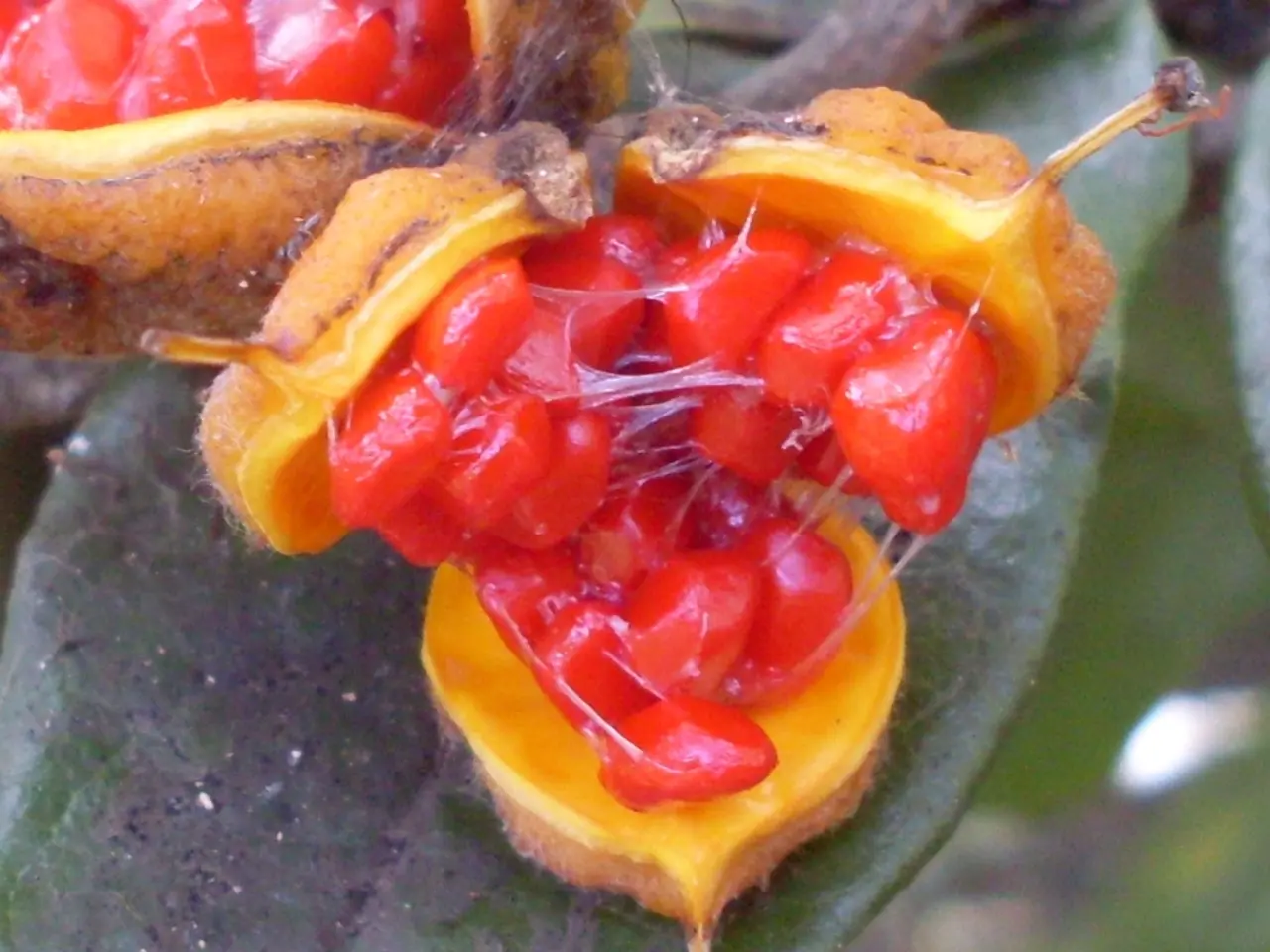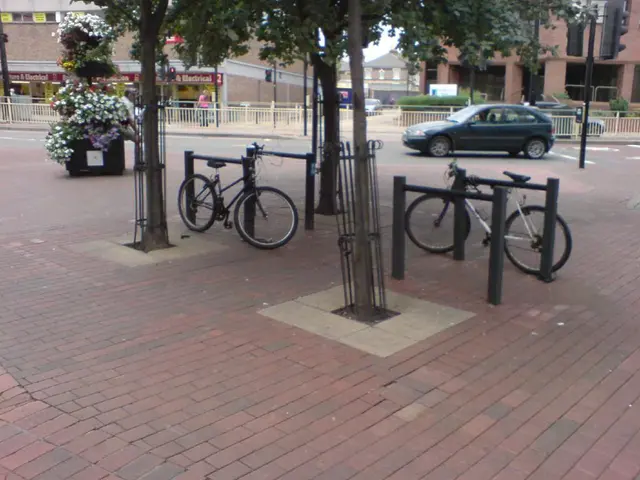Rotten State of Apples
In the world of backyard gardening, fruit growers in all states face a common challenge: bitter rot. This disease, caused by the fungi Colletotrichum gloeosporioides and C. acutatum, primarily affects apples and pears.
Bitter rot fungi overwinter in dead wood or mummified fruit, and in the spring, spores from these sites serve as the primary source of inoculum for new infections. These fungi primarily cause fruit rot, with symptoms often appearing at harvest or during storage.
While bitter rot fungi mainly affect apples and pears, some species of Colletotrichum can also infect other fruit crops, causing similar rot symptoms. However, it's essential to note that the direct association of bitter rot fungi with diseases in other trees like peaches, plums, or those with wilting issues is not established by current references. Other fungal diseases affect these crops, but they are distinct from Colletotrichum-induced bitter rot.
Proper sanitation, including the removal of infected fruit, is crucial in managing bitter rot. A healthy and vigorous tree condition is also critical for controlling the canker phase of the disease.
Annual pruning and a balanced fertility program based on soil and foliar nutrient analyses help maintain tree health. Fungicides are effective at controlling fruit rot when used from first cover until harvest, but only if a good sanitation program is implemented.
Symptoms of bitter rot first appear as small, slightly sunken circular areas that are light to dark brown in colour. On mature fruit, these areas may be surrounded by a red halo. Fruits are susceptible to infections from petal fall through harvest.
Disease development is favoured by high temperatures (80-90 degrees F) and high relative humidity (80-100%). Conidia are spread by splashing, wind-blown rain, insects, and birds, while ascospores are released into the air during rainy periods.
To combat this, dead wood, including infected fire blight shoots, should be removed from the orchard and burned for good sanitation. Chopping dead wood on the ground with a flail-type mower increases the rate of decomposition.
For commercial growers, the Midwest Fruit Pest Management Guide provides the most current fungicide recommendations. Fungicides are not effective for controlling the canker phase of the disease on weakened trees. Removing and burning mummified fruit from trees throughout the growing season reduces inoculum levels.
Bitter rot control requires integration of good sanitation practices, cultural practices, and chemical control. It's important to remember that while Colletotrichum gloeosporioides and C. acutatum are known to cause other diseases such as anthracnose fruit rot on strawberry and blueberry, ripe rot on grape, and anthracnose disease on peach, these forms are not common in all regions.
For more detailed information, backyard growers can refer to Bulletin 780, Controlling Diseases and Insects in Home Fruit Plantings, available from county Extension offices or the CFAES Publications online bookstore.
Read also:
- Symptoms Indicating Excessive Negativity in Your Surroundings: Strategies for Recognition and Management
- Decrease in travelers opting for warmer European vacation spots during summer months
- Environmentally Friendly Winter Celebrations: Sustainable Habits for the Chilly Months
- Experiencing Variation in Shark Diving Encounters within the Bahamas







